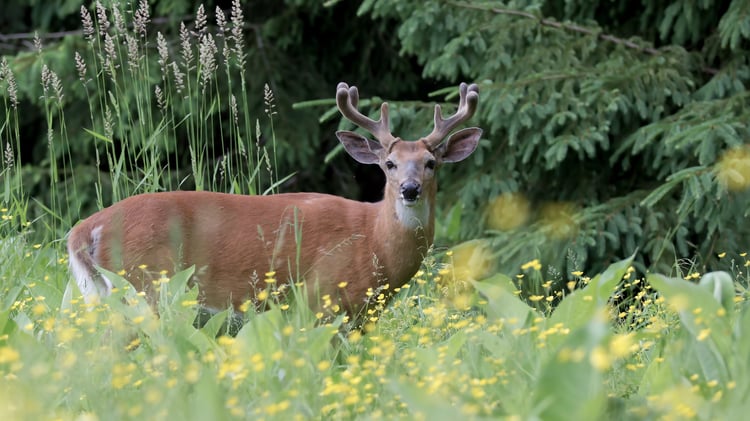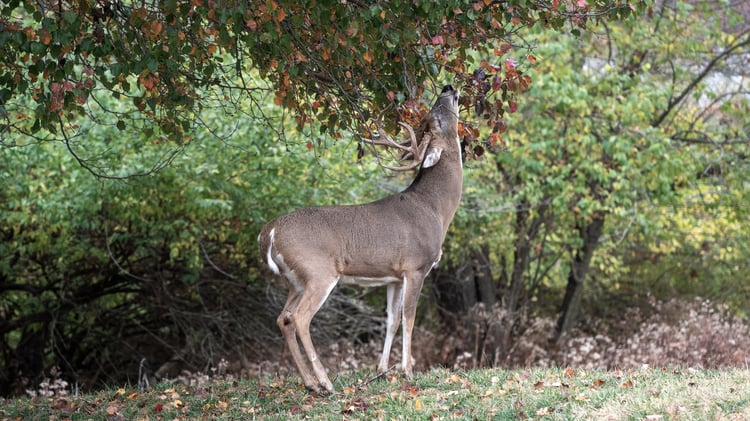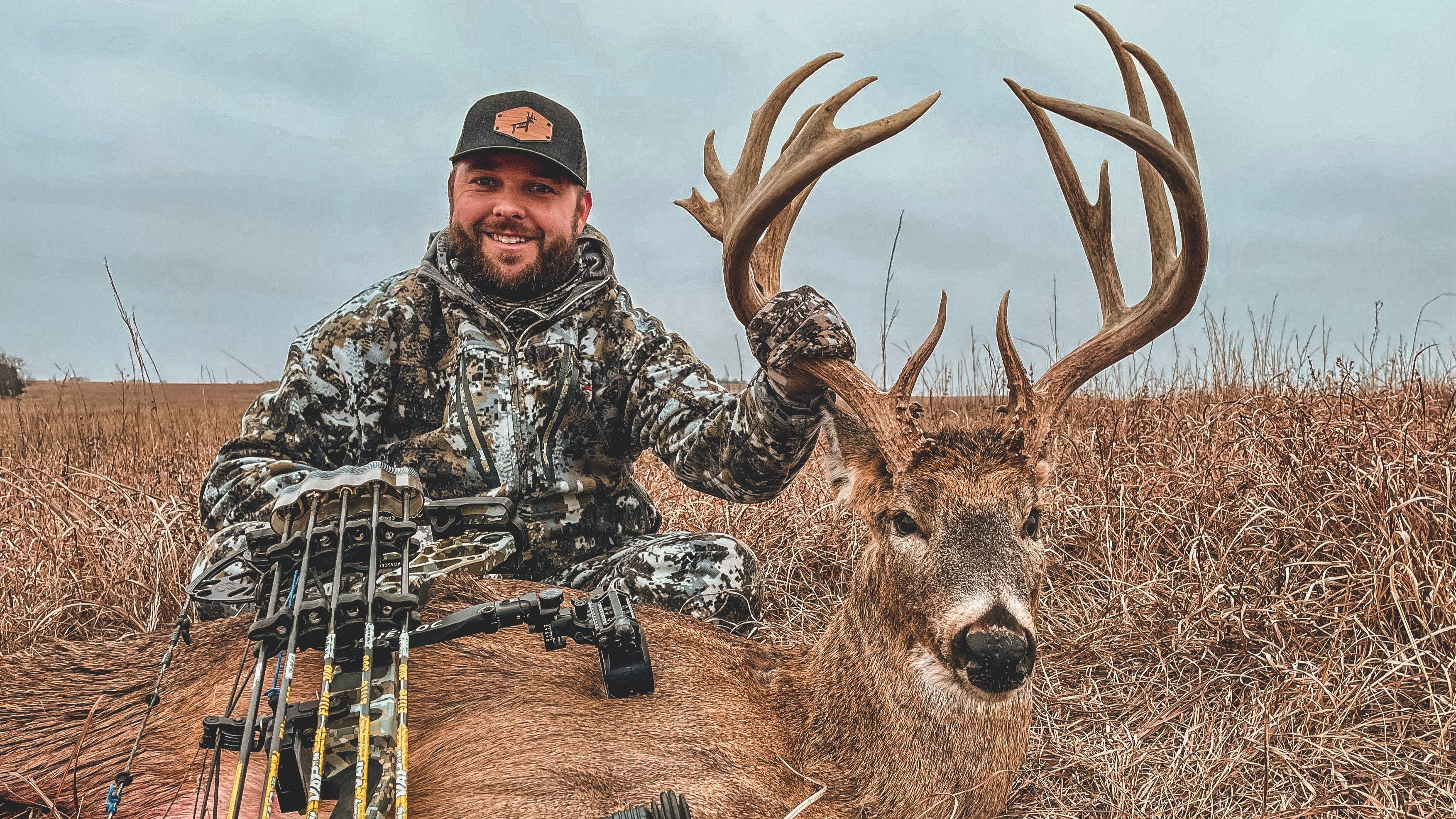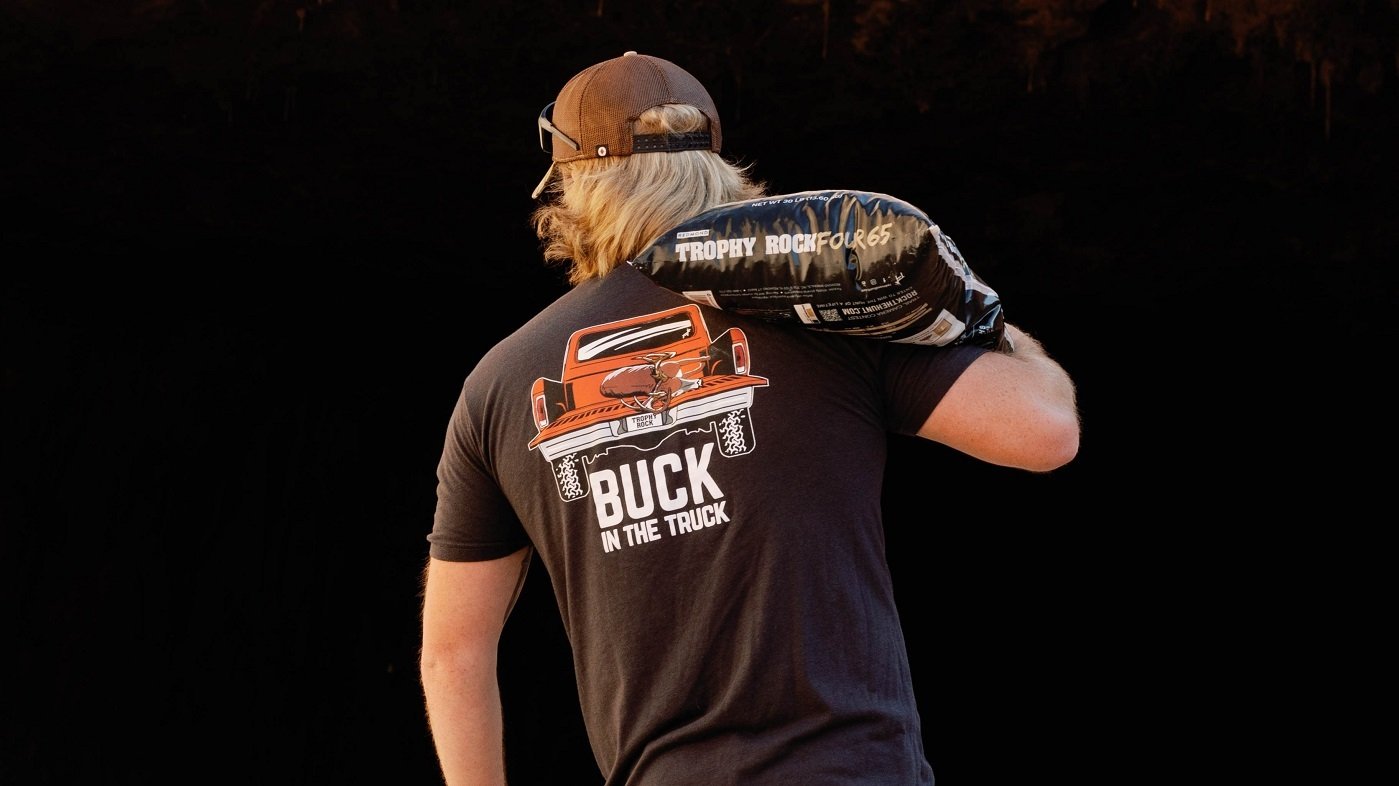Redmond Hunt Blog
Seasonal Deer Food Sources & Mineral Schedule
Redmond Hunt March 23, 2022
Deer's nutritional needs change seasonally. Learn about the best crops to plant in food plots and when and what minerals you should put out for deer.
Knowing what food deer need seasonally is an important part of hunting and deer management. We want to help provide whitetails the nutrition they need, when they need it, while also attracting them to specific locations we choose. In this article we'll cover what deer eat seasonally and how hunters and conservationists can play a key role in providing better nutrition and creating healthier herds.
Best Ways to Provide Food Sources for Deer
As hunters, we want our properties to be attractive habitats that provide plenty of nutritious food sources. Here are two great ways to support your land's existing forage and provide deer access to additional nourishment during every season:
- Plant food plots. A food plot is a planted area that serves as a supplementary food source. You can find helpful articles about food plots at the National Deer Association website.
- Provide minerals. Deer need minerals for every physiological function, including antler growth. Learn more about the importance of minerals here. If you don’t have a mineral site set up on your property, check out this article for five easy steps to establish a mineral site.
Providing quality feed through food plots and minerals benefits hunters and conservationists by: increasing herd health, density, and population; improving antler growth and trophy potential.
When to Start Mineral Sites for Deer
The best time to put out minerals for deer starts in February or March. That's when whitetails ramp up intake to support antler growth in bucks and fetal growth in does. Salt is also necessary to balance the high water content in lush spring vegetation. However, deer require minerals year-round. They'll generally use sites heavily through August, then taper off during the rut and return in late winter.
Seasonal Guide to Deer Nutrition
Whitetail nutrition and mineral requirements are complex. They're influenced by many factors, and we still have a lot to learn about how they all interact. As this Mississippi State University article notes:
"Probably no other species of wildlife have been studied as much as the white-tailed deer, and yet we still do not know enough about their nutrient requirements. We do know that their requirements vary depending on whether they are male or female, whether they are fawns, yearlings, or adults, whether they are growing, the season (environmental factors such as extreme heat or cold), and their physiological state (such as pregnancy, lactation, or antler growth)."
Sounds complicated, right? It can be. Perhaps the simpler and more direct question for hunters is, what should you provide through the four seasons to best serve your herd and hunting practices? In this article we’ve broken it down by life phases deer experience, what forage is available by season, and which supplement you should put out to fill in mineral gaps. Let's dive in.
Spring
Spring is a time of recovery for whitetails both from the fall rut and the stresses of winter. It's also a time when deer in all life phases are actively growing. This means their need for nutrition is high.
Bucks are beginning to grow new antlers in spring, with racks adding as much as 3/4 of an inch per week for yearlings and 1 1/2 inches per week for adults during peak growth months of April, May, and June.
Does are also supporting fetuses and preparing for fawning season, with most fawns dropping sometime between late April and early July and a few as late as August.

What Deer Eat in Spring
Spring is the most abundant season for nutrition as far as variety and quantity. The University of Missouri notes whitetails’ first choice for food is elm twigs, clover and soybean leaves, and lush green forbs canvassing forest floors. Later in spring they’ll eat browse from blackberry shrubs, smooth sumac shrubs, and greenbrier vines.
Best Mineral Supplement/Attractant for Spring
Deer actively seek minerals in spring. They crave and require sodium as water content and potassium soars in succulent green vegetation. Bucks and does also need calcium and phosphorous to support antler and fetal growth, respectively, and for does to prepare for nursing. This is a great time of year to begin supplementing your herd’s needs.
Use Trophy Rock/Block and/or Four65 at your site during spring. Both have 60+ essential minerals, but Trophy Rock comes in a solid rock and Four65 is crushed into loose pellets.
Summer
Moving into the summer months, bucks are still growing antlers and will continue to until around mid-August. Once growth stops, racks begin to harden and velvet starts to dry.
Most does have recovered from fawning by mid-summer and are now using much of their energy and nutrients to nurse new fawns. In fact, nursing does use and lose more nutrients and energy than any other class of deer.
What Deer Eat in Summer
Forbs and native browse are whitetails go-to nutrition during summer. This makes up nearly 70 percent of their diet. They also prefer agricultural or food plot crops like corn and soybeans over grasses.
As summer wanes into August, lignin in plants increases, making them stiff, woody, and less tasty. Vegetation also doesn’t have as much Brix, or sugar content, which whitetails crave. And soybean leaves, a staple during summer, has now dried and turned yellow and unappetizing. That means from late August to the first of October a lull occurs where herds aren’t finding quality vegetation unless you’ve planted specific food plots for them.
Best Mineral Supplement/Attractant for Summer
Mineral demand is at its peak from June through mid-August. This is in large part because of the dense water content in vegetation, demanding milk production in does, and antler growth in bucks. By September, however, drying vegetation and slowing physiological processes are decreasing their need.
Continue using Trophy Rock/Block and/or Four65 at your site through summer to support antler growth and lactating does.
Fall
As fall arrives, does stop nursing their fawns and bucks are no longer growing antlers, allowing both to build up fat reserves and prepare for the coming winter. By early September bucks have scraped the velvet from their racks and are ready for the rut, which peaks in early November in the Midwest and later in southern regions. During this time, both does and bucks are actively moving about and more likely to be seen.
 What Deer Eat in Fall
What Deer Eat in Fall
Fall is the time when tasty soft and hard mast (fruit from trees) like apples, blackberries, and acorns begin to drop. Acorns particularly are a staple food for whitetail. They’ll also eat dried soybeans, wheat and turnips from food plots, if available, as well as native forbs.
Best Mineral Supplement/Attractant for Fall
The need and desire for minerals dives in the fall. Deer aren’t growing, does aren’t nursing or pregnant, and bucks are abandoning food sources to chase receptive does during the rut. Not to mention, whitetails typically have an abundant store of preferable mast to munch on.
An attractant will definitely be needed if you're trying to draw deer into sites during fall hunting months. By the first of September until the end of the hunting season, try utilizing an attractant at your site, like Liquid Trophy Rock. It has a sweet flavor, potent molasses scent, and the same expansive mineral profile as original Trophy Rock.
Winter
Winter is a season for whitetails to simply survive. They’re experiencing post-rut stress, scarce forage, and extreme weather conditions with cold, snow, and ice. Physiologically, bucks will shed their antlers between January and March, and pregnant does are again supporting growing fetuses.
What Deer Eat in Winter
Remnants from agriculture crops and native browse make up a huge part of a deer's diet throughout winter, as well as leftover hard and soft mast. Food plot crops, like corn or a brassica blend, can also play a key role in supplementing nutrition and getting whitetails through the winter.
Best Mineral Supplement/Attractant for Winter
After the hunting season, many hunters pull the plug on their supplemental feeding programs. However, this is when deer are hitting food sources hard in an effort to put weight back on post-rut. By mid-December whitetails also start using minerals again and will gradually build up their use through March. Minerals are needed to help recover from the rut, lessen effects from winter stress and scarce vegetation, and provide additional support for pregnant does. Learn more here about winter mineral supplementation.
We recommend putting out a supplemental product post-rut and into January that is packed with protein and a complete spectrum of balanced minerals. By mid-January, Trophy Rock and/or Four65 should once again become the main mineral sources at your site as deer slowly ramp up use.
Yearly Deer Nutrition Calendar & Mineral Site
By knowing what dear eat, when, and what phase of life they experience by season, you can better know what your herd needs. Following our Redmond Hunt nutrition and mineral attractant schedule below will help you know what food plots to plant and how to best utilize your site to keep your herd healthy year-round. Click the button below to shop Redmond supplements now!
© Redmond Hunt 2023. All rights reserved.



.jpg)
